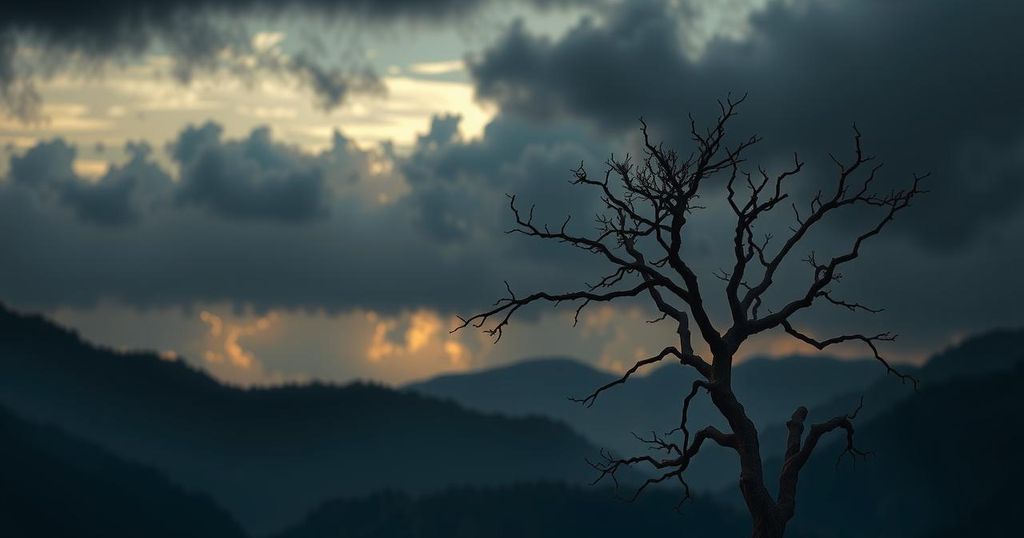Residents are fleeing advancing M23 fighters in the eastern DRC, particularly from Minova, which has been captured by the group. The situation has led to a growing humanitarian crisis, with many displaced individuals seeking shelter amid precarious conditions. Concerns about safety continue to rise, as camps near Goma become overcrowded due to continuous exoduses. The Congolese army has taken measures to counter the M23 threat while daily life in Goma remains tenuous yet active.
As the M23 fighters continue to advance, many individuals are fleeing their homes, carrying their belongings towards Goma in the eastern Democratic Republic of Congo. The port city of Minova has fallen to the M23, which has intensified its territorial gains at the expense of the Congolese military. Displaced populations have been forced to relocate multiple times due to over three decades of conflict, with the situation worsening since the resurgence of the M23 in 2021.
Anuarite Nabintu, a displaced resident, expressed, “Everywhere we go, we find ourselves in an uncertain situation.” With the capture of Minova, the M23 has nearly encircled Goma, creating further security concerns. Military actions were announced by the Congolese army to counter the advances, including suspending small boat movements on the lake to prevent infiltration.
Many displaced individuals have sought refuge in camps, while some have been taken in by families in the city center. Reports indicate that over 100,000 displaced persons are currently in extremely precarious conditions around Goma. In the Sam Sam camp, the presence of newly displaced people has exacerbated existing challenges.
Kadibanga Batungi, a resident of the Sam Sam camp, conveyed concern about the potential need to move again, stating, “If the situation persists, even this camp’s residents will have to leave for Goma city.” In light of the heightened tension, aid agencies find it challenging to provide assistance due to safety concerns.
Some displaced persons, left to fend for themselves, voiced frustrations regarding their predicament. David Bonzi lamented their losses, saying, “We left our households, our children, our property. We don’t know what the government is doing.” Meanwhile, Goma retains an appearance of normalcy, with businesses still open and security forces maintaining a presence, despite echoing sounds of conflict nearby.
Despite the ongoing diplomatic strains, the border between the DRC and Rwanda remains operational, allowing for movement between the two nations. The situation in Goma continues to evolve with a growing humanitarian crisis, as civilians are caught in the crossfire of prolonged conflict.
The article addresses the escalating conflict between the M23 armed group, allegedly backed by Rwanda, and the Congolese army, with Goma at the epicenter of the humanitarian crisis. With the ongoing instability in the region historically characterized by ethnic tensions, the M23’s advances have led to significant displacements of populations. The situation has deteriorated since 2021, highlighting the urgent need for intervention and support for those affected. This conflict has roots that extend beyond mere territorial disputes, intertwining with broader geopolitical dynamics in Central Africa, which complicates the response and resolution efforts. The plight of the displaced persons emphasizes the dire humanitarian conditions and the struggles for survival amidst violence.
The situation in the eastern Democratic Republic of Congo, particularly in Goma, reflects a severe humanitarian crisis exacerbated by the advances of the M23 fighters. As the conflict continues, thousands have been displaced, facing precarious living conditions. Calls for international attention and assistance intensify as the local population endures both physical and emotional hardships amid ongoing violence. The conflict underscores the urgent need for peace and stability in the region to alleviate the suffering of civilians.
Original Source: www.france24.com






